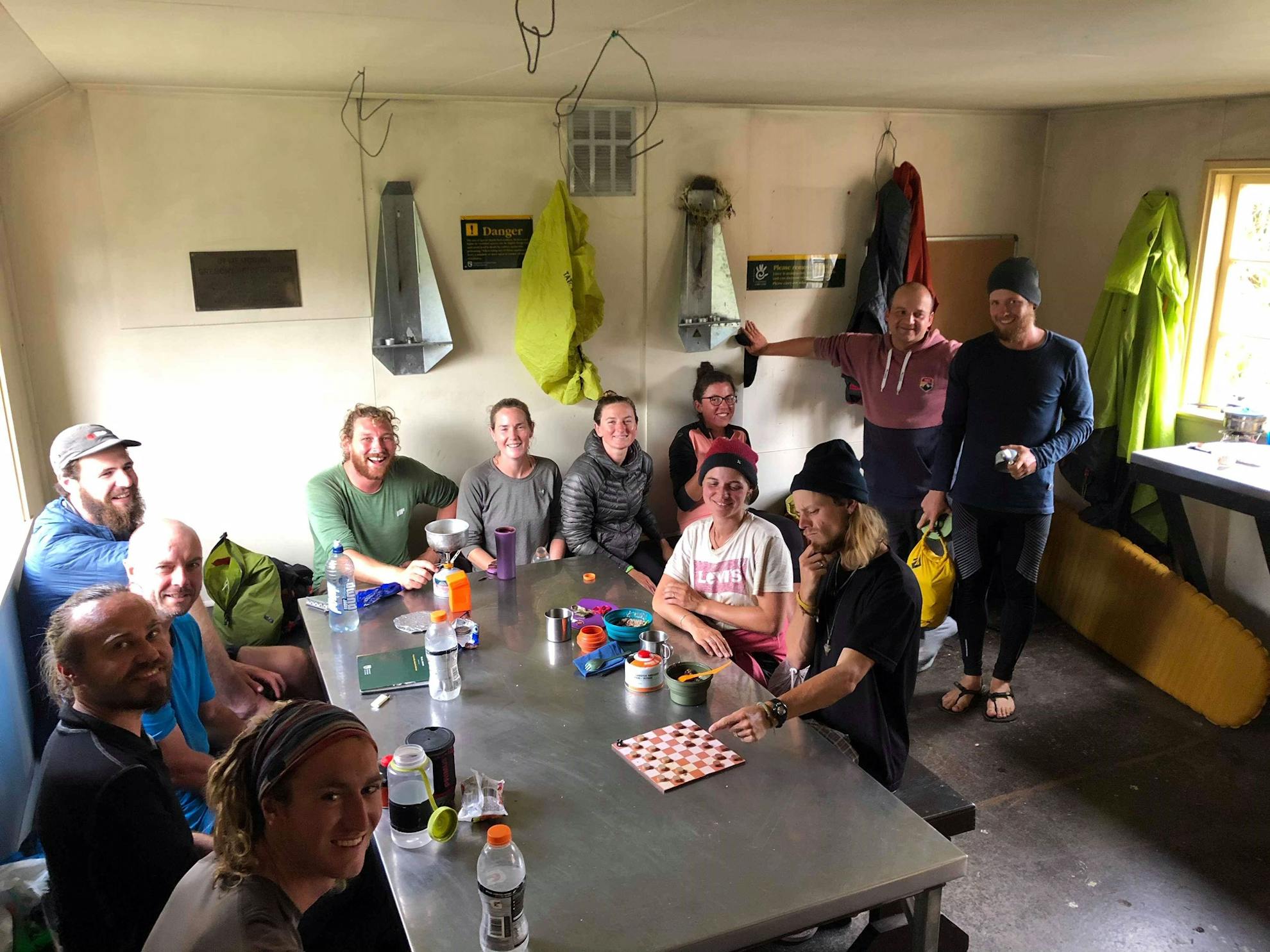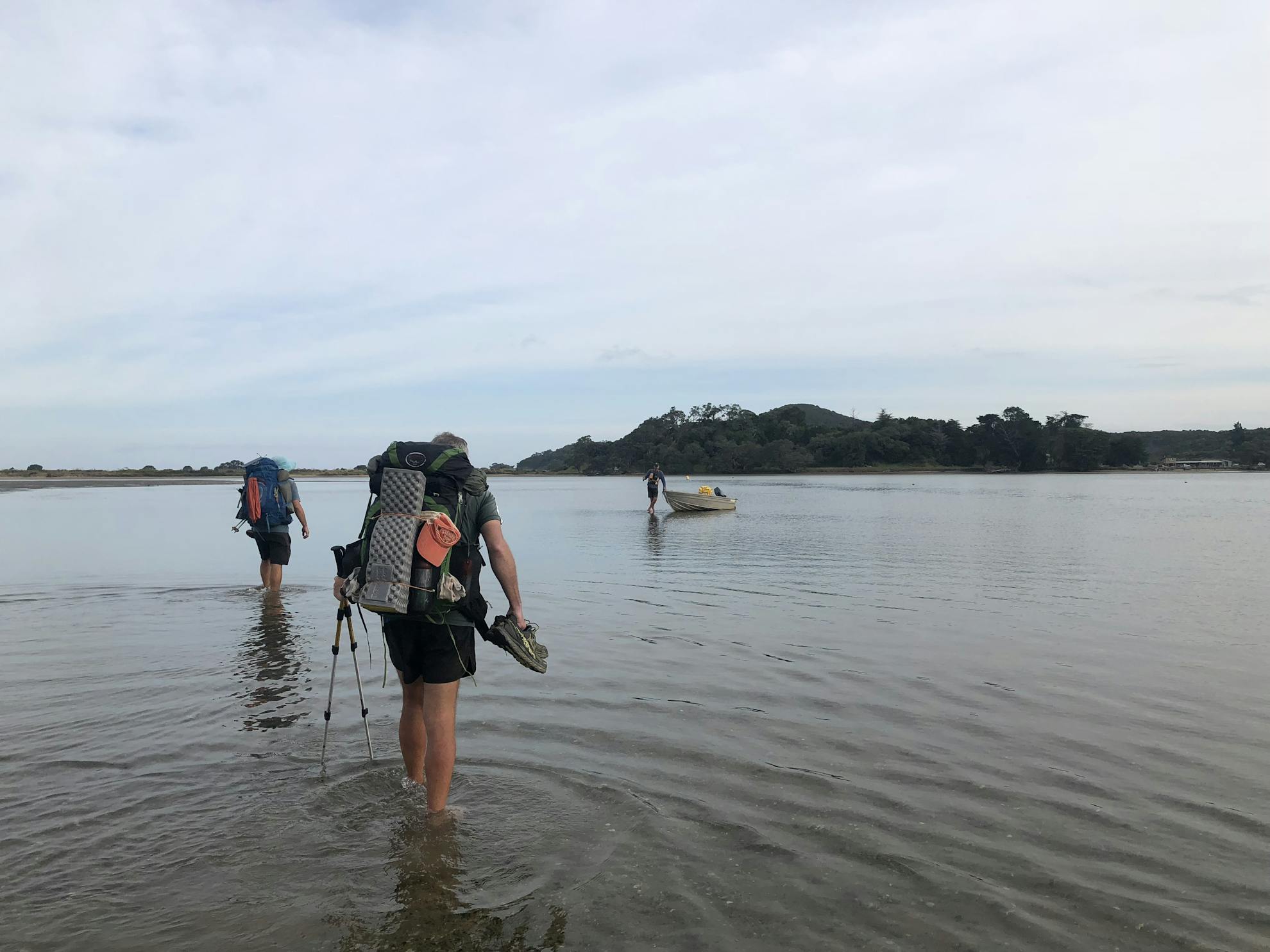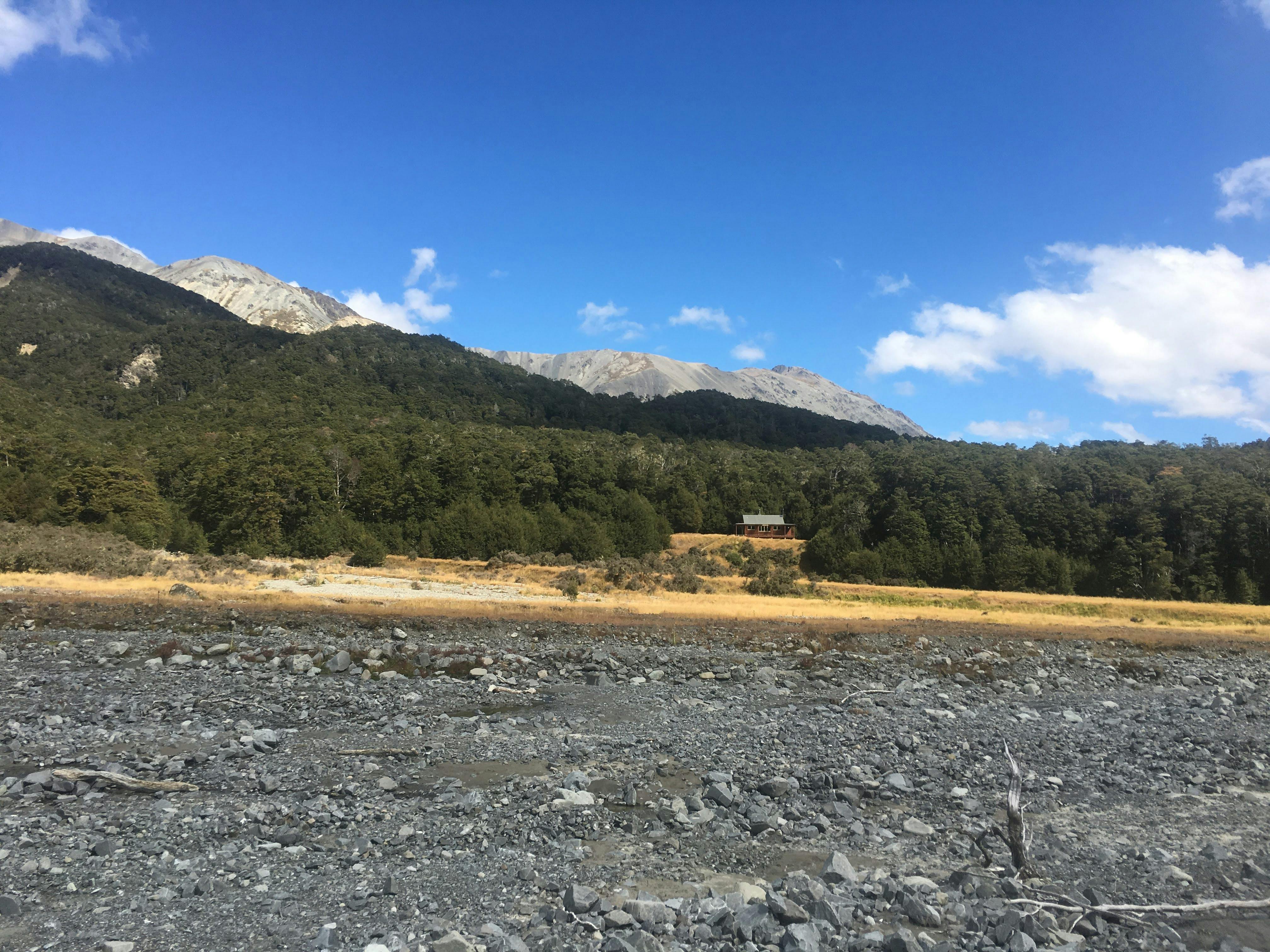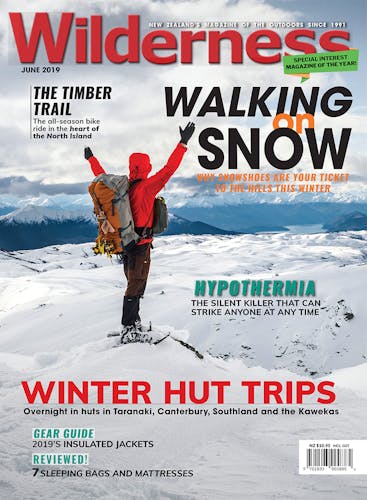Francesca Governali spent two weeks as a volunteer hut warden at Hamilton Hut. During her time, she met dozens of Te Araroa Trail walkers and found plenty to reflect upon
While walking the trail to Hamilton Hut, where I was to spend two weeks as the warden, I marvelled at the new scenery and contemplated what the following days might bring. I could not have guessed at the number of people I was about to meet, nor how much I would learn about New Zealand tramping and, specifically, about the Te Araroa Trail.
Within hours of settling in at the hut, my first trampers arrived. Given they were a couple from France and New Zealand, I felt self-conscious about giving a hut talk to a Kiwi who I felt must know more about the backcountry than I ever could. But I quickly learned that she, along with pretty much everyone else who stayed at the hut, understood the need for a hut talk even if they’d heard it all before. Those unsure feelings of the first night were soon eased by the visiting trampers’ friendliness and willingness to share, and there began my education about life on the Te Araroa Trail.
I come from the US, which has two of the world’s oldest and most well-known long trails; the Appalachian Trail that runs 3500km along the Appalachian Mountains in the eastern US and the Pacific Crest Trail which covers 4265km along the west coast.
However, shortly into my first conversation with a TA walker, I realised New Zealand’s long trail is different. Compared to other long trails around the world, it is young, covers remarkably varied terrain and takes on a different definition of the term ‘trail’ – while the AT and PCT have a clear cut path for their entire lengths, the TA incorporates a variety of trails from a well-made walking track to routes with markers every few hundred metres that are much more difficult to follow.
Officially opened in 2011, the TA is in its infancy compared to the over 50-year-old Pacific Crest Trail. This fact quickly came up in any discussion about the status of the trail. As one walker put it, the TA is still in its “teething stage”.
During my two weeks at Hamilton Hut, I had the opportunity to talk with 95 walkers who overnighted and even more who passed through during the day. Comments ranged from the views of veteran Kiwi trampers to international walkers who had never overnight tramped before. Of those who stayed at Hamilton, 75 were TA walkers and 20 were walking the Cass-Lagoon Saddle Loop. Of these 95 trampers, most came from the United States (24), next was New Zealand (20), followed by Germany (14), the United Kingdom (eight), France (eight), Canada (six) and Australia (five). Other European countries and Brazil made up the final 10.
I felt fortunate to be welcomed into a lively trail community of sorts. Each day was a guessing game of who might show up and where they might be from. Some days, a full hut would become even busier as late trampers arrived. Regardless of the number of visitors, the conversation often came back to trail experiences and reflections about how the TA is coping with growth. What follows are some of the major observations I made.

The growing pains
The number of people thru-walking the TA is estimated to have doubled every year since its inception. This has resulted in around 1200 walkers over the 2018-19 season.
This high number of trampers combined with limited infrastructure along the trail has many walkers worried about the trail’s future. Almost every TA walker expressed concern for trail infrastructure – the huts, long drop toilets and trail conditions. Many were grateful to be on the trail now before it gets even more crowded and infrastructure is overrun. One example was that a number of six-bunk huts (like Nichols and Te Matawai Huts in Tararua Forest Park) with no camping areas were frequently crammed with 20 people trying to overnight. This forced some walkers to tramp through the dark to find a less crowded place to pitch their tents. Even at Hamilton, with its 20 bunks and additional campsites, I experienced a night with 23 people. Even though some chose to pitch their tents, queues formed at the long drop and the once-spacious kitchen felt crowded.
Walkers also talked about arriving at huts that had been left so dirty, they felt like cleaning them wouldn’t be effective so the mess would be perpetuated. A tramper from France explained: “Arriving at a rundown hut not only makes you sad and feel bad for overnight trampers who only visit one or two huts a season, but also makes you feel like your cleaning it won’t be very beneficial.”
To this end, while TA walkers felt most thru-walkers had come to understand New Zealand hut and backcountry etiquette, many felt there could be better education or more signage for shorter term visitors.
Many of the walkers I met voiced concern about tension with tourists and tourism operators. In some of the more popular places like Tongariro and Nelson Lakes, TA walkers are blamed for overcrowding areas and diminishing other visitors’ experiences. Walkers mentioned how overnight tourists or local trampers would get to huts only to find them already filled by TA walkers. This never happened during my stay at Hamilton Hut, but some walkers wondered if there should be separate campsites for the TA or ways the trail could be rerouted to lessen pressure in the busiest areas.
Will the trail magic last?
An even more pressing concern for many of the TA walkers I met was that the generosity of New Zealanders they have encountered along their way – whether it is in shuttles, meals, gardens to camp in – will be exhausted as more people walk the trail.
They think that because, especially in the North Island, so much of the trail experience depends on “Kiwi trail magic” (as one walker put it), it’s concerning for the future. For example, there is a suggestion in the official trail notes to contact one of a list of locals who will row trampers across the mouth of the Waipu River. It had worked for walkers this season, but many couldn’t imagine how such generosity could last if numbers continue to grow as they have.
More DOC rangers needed
A regular comment was that I was the first or second hut warden met along the entire trail. It seemed that the extent of most walker’s interactions with DOC was limited to buying their hut pass and picking up resupply boxes at visitor centres.
Many walkers admitted to knowing others who did not purchase backcountry passes and after learning, through word of mouth on the trail, of a warden at a hut, would skip that hut. This situation made me wonder if the lack of interaction with the organisation responsible for 60 per cent of the TA made those walkers skipping out on a hut pass feel less of an obligation to follow what most would consider the proper tramping etiquette.
This sentiment of walkers gaining a lot from their experience and not necessarily contributing to the trail, or the country, beyond the bare minimum, was another hot topic.

Donating to the trail
While many TA walkers said that they would be willing to pay (much more in some cases) for the backcountry hut passes, most had not made the suggested $500 donation to the TA Trust. In its guide book, the trust states: ‘If you’re walking the trail and would like to give back to what has been provided freely, then consider contacting Te Araroa Trust to donate either skills or money.’ Some specific reasons that walkers did not make the voluntary donation included:
“I felt like it wasn’t clear where TA Trust money would be going, especially given the trail conditions in some areas, so that made me hesitant to make the donation.”
“I would rather give to LandSAR or to DOC if possible because it seems more clear where the money [is] going.”
“I’m hopeful that instead of making a donation, in the future trampers might be able to donate time. Like they could give TA walkers trail markers to place along a section, or have opportunities for volunteering on conservation projects along the way or as hut wardens, or on trail crews for some of the most damaged areas.”
According to The Te Araroa Trust’s chief executive Mark Weatherall, out of the 1200 walkers this season, only 165 had made donations totalling $50,000, with the highest single donation from a non-walker who gave $5000. Weatherall said he was disappointed at the low contribution rate and remarked on how it seems “a lot of people take advantage of all the benefits” the trail has to offer.
It makes me wonder what is stopping TA walkers from contributing a few dollars from the estimated $7000 it costs them to walk the trail.
Weatherall hopes that someday it will be possible for walkers to volunteer time to the trust, but reminded me of the administration and additional coordination it takes to organise volunteers – something his staff of one doesn’t have time for at the moment.
As for where the money goes, the trust uses its funding to facilitate a range of tasks from maintaining and repairing damaged tracks (it can cost over $10,000 to rebuild a slipped track), to forming land agreements, preparing and updating trail notes. Weatherall said it costs around $300,000 annually to run the trust, so while donations are integral to its function and lessen the need for outside grants, they are not the be-all and end-all.
Weatherall acknowledged that the trust may need to communicate more clearly around how donations are used if that’s what it takes to increase them.
Despite the concerns voiced by these walkers, almost all I talked to were thrilled to be on the TA. Many acknowledged their low points – bad weather, days they doubted their intentions, overcrowding at huts, getting lost – but felt fortunate to be seeing New Zealand by foot, supported by the generosity of so many New Zealanders and to have the opportunity to meet members of a surprisingly international community in remote places.
The walkers who passed through this year in late February and early March were hopeful that more would contribute to conservation and that ways could be found to ‘future proof’ the TA. Most were thankful for their trail experiences.
It may be a trail at a crossroads, working out its growing pains, but it also has a lot of support from people wanting to see it succeed.







